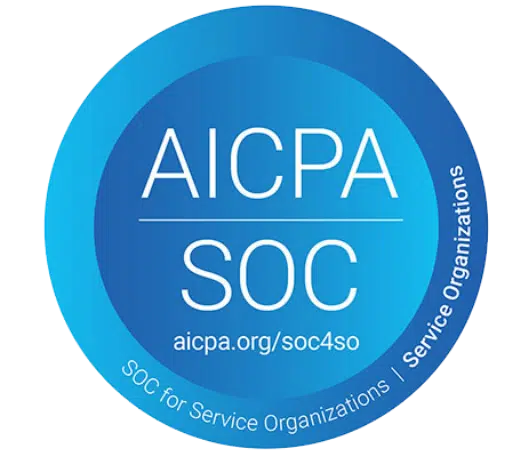Today’s businesses don’t operate in a vacuum. To maintain high standards of efficiency, supply chains everywhere need products and services from third-party vendors. Maintaining relationships with suppliers is a well-accepted part of keeping up production lines, controlling internal operations, and generally conducting business.
However, every partnership you make introduces a degree of risk that must be accounted for. Examples include:
- Privacy concerns
- Digital security
- Business continuity
- Regulatory compliance
- Physical security
Risk is a hot topic in the business sector. Over 9 out of 10 CEOs agree that measuring and communicating risk is critical to achieving long-term success, yet not enough companies know how to conduct risk management practically.
A 3rd party vendor management program is the key to ensuring your safety and benefit from an interconnected workflow. We’ll discuss the details of vendor risk and the ways we can address it.

Vendor Risk Management Insights and Benefits
An October 2023 Deloitte TPRM survey sheds light on the evolving complexities and the imperative for organizations to redefine their approach to 3rd party vendor management.
Drawing insights from the Deloitte Global survey, strategic focus areas for vendor risk management emerge as key focal points.
The survey reveals trends among industry leaders as they tackle vendor risk challenges.
Notably, among the top priorities is the imperative to refresh and improve 3rd party risk assessment methods. This priority was expressed by 63% of the respondents to the report mentioned above. Simultaneously, there’s a notable recognition of the pivotal role that executive leadership plays in steering and governing third-party relationships. This shift departs from conventional, departmentalized practices and embraces a more holistic and talent-centric approach.
The Evolving Landscape: Challenges and Opportunities
As we stand on the threshold of 2024, the terrain of vendor risk management unfolds with a blend of challenges and opportunities. It is a landscape where strategic foresight and actionable insights are imperative to overcome challenges and leverage opportunities.
Building Resilient Partnerships: The Essence of VRM
Contrary to popular belief, effective vendor risk management is not a procedural necessity. It is actually a transformative force. VRM is a cornerstone for building strategic partnerships that catapult healthy business growth.
By viewing VRM through the lens of strategic partnership building, organizations can leverage the benefits of vendor due diligence to identify and engage with vendors who meet operational requirements and align with broader business objectives. This shift in perspective transforms VRM into a strategic enabler, guiding organizations in selecting vendors that contribute to their growth ambitions.
In essence, VRM is a proactive and forward-looking practice. It focuses on risk prevention and cultivating collaborative relationships that drive innovation, efficiency, and competitiveness. As organizations navigate the complexities of the modern business ecosystem, VRM is a key enabler in fostering resilient partnerships integral to sustained success and growth.
Understanding Vendor Management Programs
What do vendor risk management solutions entail? Let’s take a look at the types of risk that can be covered in a risk assessment:
- Compliance risk: What’s the chance that working with this third-party will result in compliance issues with governmental regulations? Financial and medical industries have to pay special attention to this risk, as the penalties can be severe.
- Cybersecurity risk: Data breaches and cyberattacks have been all over the news, with 7 out of 10 business leaders reporting increased cybersecurity risks according to an Accenture study. Communications with suppliers is a popular entrypoint for cyberthreats, so apply your due diligence to this field.
- Financial risk: Imagine you rely on a single supplier for a critical raw material in your production line. What happens if a shipment cannot be completed, and you end up disrupting your sales as a result?
- Operational risk: What’s the chance that a vendor might cause issues that will result in disrupted internal operations? Are you able to trust its reliability, or should you consider having a backup vendor just in case?
- Reputational risk: Is there a risk that a failure on behalf of the vendor could result in lost trust with your clients?
What you need is a formalized program for identifying and mitigating these risks accordingly across all your vendors. Two factors you have to keep in mind are prioritization and continuous efforts.
Not all risks are created equal, so prioritize them. Group your suppliers into categories based on their risk levels and focus your efforts where they matter most. For instance, your cybersecurity service provider will take precedence over the store that supplies your office stationery.
Keep in mind that risk assessment is an ongoing process. New risks will always introduce themselves as you work with new contracts and suppliers, so don’t make risk management a one-time consideration. Monitor your business network in real-time so that nothing slips by unnoticed.
Start Getting Value With
Centraleyes for Free
See for yourself how the Centraleyes platform exceeds anything an old GRC
system does and eliminates the need for manual processes and spreadsheets
to give you immediate value and run a full risk assessment in less than 30 days
The Benefits of 3rd Party Vendor Risk Assessment
The high demand for external risk assessment shows that business owners everywhere understand its importance. Benefits of undertaking an external risk assessment include:
- Compliance: Government regulations are a significant pain point for businesses with poor risk management. Not only do you risk heavy penalties and fines, but sanctions can result in a damaged reputation with your customers and partners.
- Reducing risk: Determining what the exact risk is for each vendor enables you to keep a standard across all vendors. Through this, you can negotiate contracts that will ensure all vendors meet company policies at scale, minimizing potential risks.
- Visibility: Like most companies, you’re likely to work with a large variety of vendors. It’s easy to overlook a supplier, when analyzing vendor-relationships, due to sheer volume or habit. Having a formal assessment system in place by a third party ensures a non-biased and complete look at every connection you have with business partners.
- Operational Efficiency: The automation and data-driven insights facilitated by TPRM platforms, such as Centraleyes, simplify tracking progress and managing vendor risk efficiently through a single, cutting-edge visual dashboard.
- Cybersecurity Preparedness: With cyber threats being a top concern, TPRM helps organizations stay vigilant and respond proactively to potential threats.
Want to take advantage of these benefits? Setting up a third-party risk management program can be simple and efficient with the right tools and practices in place.
Common Pitfalls of Third-Party Risk Management Programs
Many companies fall short of thoroughly tracking their risks for several reasons. Most of the causes can be categorized into the following:
- Poor visibility into risk: Using an outdated legacy approach can make it difficult to visualize risk across your vendors. A powerful integrated risk management platform that presents risk findings in cutting edge visuals is often needed to overcome this.
- Financial solvency insurance: Constant monitoring of the financial viability of your business and its partners in real-time is essential, and many companies don’t have access to that kind of technology.
- Cybersecurity control framework: Having a framework with which to measure the cybersecurity posture of your vendors is essential. Attacks that impact third-parties will ultimately impact you as well.
- Incident response: Issues can come up unexpectedly. If you aren’t ready for them ahead of time it could have a very large negative impact on your organization. Don’t be caught without a fast response plan in place to ensure business continuity and minimal impact.
- Social responsibility: Risks don’t have to be financial in nature. Know your brand’s environmental and social responsibilities and ensure that they are reflected in the suppliers you choose to work with. ESG is a key focus for vendors in 2022.
- Health and safety: Likewise, check on the safety controls for both you and your partners. Any incidents in this field can cause significant damage which will affect your reputation and trust level in the market.
Measuring and responding to third-party risk doesn’t have to be difficult, especially now that customized solutions have arisen in response to growing demands for risk management tools.
Achieving Efficient and Scalable Risk Management is Easy With Centraleyes
Today, it’s a no-brainer to automate vendor risk management. Risks are becoming too numerous and complicated to handle manually anymore in spreadsheets. New vulnerabilities for cyberattacks and entry points to your business are being uncovered daily. As a result, we all need a scalable approach to cyber risk management, which is exactly why we created Centraleyes.
Centraleyes’s risk management platform revolutionizes Vendor Risk Management. Onboard vendors in less than 60 seconds. Utilize automation and data driven insights to easily track progress and manage it all efficiently via a single cutting-edge visual dashboard. Save hundreds of hours as you efficiently manage, quantify and mitigate the inevitable vendor risk.
Experienced management teams today know that risk and compliance management software is key to identifying and reducing third-party vendor risk. Are you interested in seeing how you can automate vendor risk management with Centraleyes? Book a meeting today to get started.
Start Getting Value With
Centraleyes for Free
See for yourself how the Centraleyes platform exceeds anything an old GRC
system does and eliminates the need for manual processes and spreadsheets
to give you immediate value and run a full risk assessment in less than 30 days





